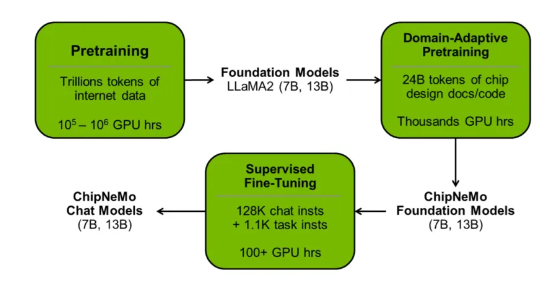Nvidia's NeMo Project Utilizes Generative AI to Design Semiconductor Chips
-
Nvidia's NeMo project has demonstrated the immense potential of generative artificial intelligence (AI) in semiconductor chip design. In a recent study, Nvidia semiconductor engineers showcased how generative AI can enhance the semiconductor chip design process.
This research indicates that domain-specific professionals can create productivity-boosting assistants by using large language models (LLMs) trained on internal data. Nvidia's NeMo project highlights the potential for gaining a competitive edge in the semiconductor field through the application of customized AI models.
Semiconductor design is an extremely challenging task, involving the meticulous construction of chips containing billions of transistors on 3D circuit diagrams—structures as intricate as city streets but thinner than a human hair. This requires multiple engineering teams to collaborate over several years, with each team focusing on different aspects of chip design using specific methodologies, software programs, and computer languages.
Nvidia's chip designers have found a way to leverage large language models (LLMs) to assist in semiconductor chip creation. Mark Ren, the lead author of the study, stated, 'I believe that over time, large language models will assist in every stage of the work.'
The research paper was announced by Nvidia's Chief Scientist, Bill Dally, at the International Conference on Computer-Aided Design in San Francisco. Dally remarked, 'This work marks an important first step in applying LLMs to complex semiconductor design tasks. It demonstrates that even highly specialized fields can train useful generative AI models using internal data.'
Nvidia's research team developed a customized LLM called ChipNeMo, trained on the company's internal data to generate and optimize software that assists human designers. The long-term goal is to apply generative AI to every stage of chip design, significantly improving overall productivity. The team is currently exploring initial applications, including chatbots, code generators, and analysis tools.

One of the most popular applications is an analysis tool that automates the time-consuming task of maintaining updated bug descriptions. Additionally, there is a prototype chatbot to help engineers quickly locate technical documentation, and a code generator for creating snippets of specialized software used in chip design.
This research paper focuses on the team's efforts to collect design data and create a specialized generative AI model, a process applicable to any industry. The team first used foundational models and refined them with Nvidia NeMo, a framework for building, customizing, and deploying generative AI models. The final ChipNeMo model boasts 43 billion parameters and was trained on over 1 trillion tokens, demonstrating its ability to understand patterns.
The semiconductor industry is just beginning to explore the possibilities of generative AI, and this research provides valuable insights. Companies interested in building their own custom LLMs can leverage the NeMo framework, available on GitHub and the Nvidia NGC catalog.
